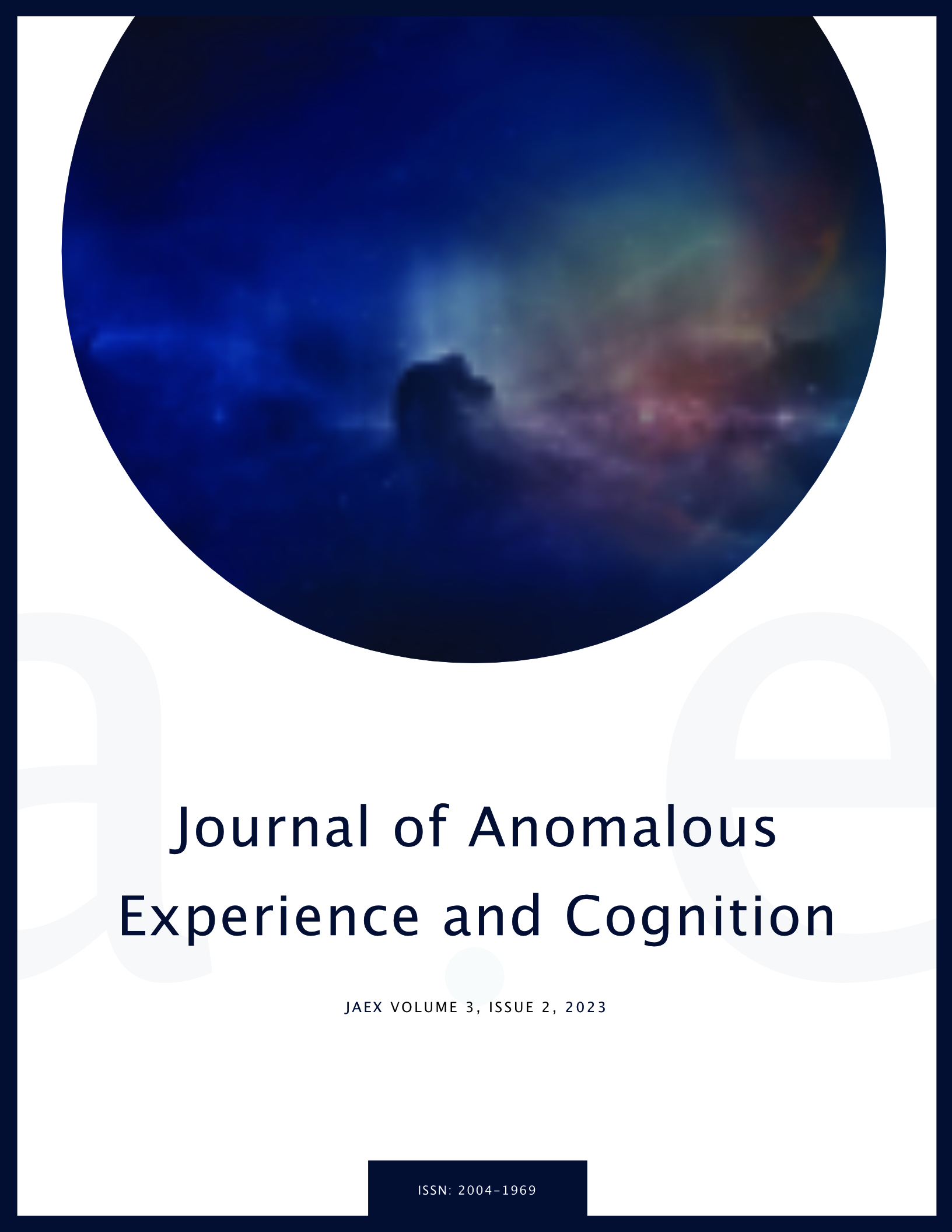Sam Knight Details How Not to Build a Premonitions Bureau
DOI:
https://doi.org/10.31156/jaex.25150Keywords:
precognition, premonitions, anomalous experience, psi research, scientific communication, anomalous cognitionAbstract
N/A
References
Cheung, T., & Mossbridge, J. (2018). The premonition code: The science of precognition, how sensing the future can change your life. Watkins Media Limited.
Erikson, E. H. (1946). Ego development and historical change: Clinical notes. The Psychoanalytic Study of the Child, 2(1), 359-396. https://doi.org/10.1080/00797308.1946.11823553
Kelly, E. W., & Tucker, J. B. (2015). Research methods with spontaneous case studies. In E. Cardeña, J. Palmer, & D. Marcusson-Clavertz (Eds.), Parapsychology: A handbook for the 21st century (pp. 63–76). McFarland.
Kuhn, T. S. (1970). The structure of scientific revolutions. University of Chicago press.
Mossbridge, J. (2021). Long time-frame causally ambiguous behavior demonstrated in an optical system. Preprint available at Researchgate: https://www.researchgate.net/publication/349106030_Long_time-frame_causally_ambiguous_behavior_demonstrated_in_an_optical_system
Mossbridge, J. (2023). Precognition at the boundaries: An empirical review and theoretical discussion. Journal of Anomalous Experience and Cognition, 3(1), 5-41. https://doi.org/10.31156/jaex.24216
Wahbeh, H., Fry, N., & Speirn, P. (2022). The noetic signature inventory: Development, exploration, and initial validation. Frontiers in Psychology, 13, 838582.
Wargo, E. (2018). Time loops: Precognition, retrocausation, and the unconscious. Anomalist Books. https://doi.org/10.3389/fpsyg.2022.838582
Downloads
Published
How to Cite
Issue
Section
License
Copyright (c) 2023 Julia Mossbridge

This work is licensed under a Creative Commons Attribution 4.0 International License.
All articles published in JAEX are open access, freely and universally accessible online, and archived in the open journal’s Lund University website (https://journals.lub.lu.se). Articles in JAEX can be distributed under the terms of the Creative Commons Attribution 4.0 International License CCBY (http://creativecommons.org/licenses/by/4.0/), which permits unrestricted use, distribution, and reproduction in any medium, with appropriate credit to the original author(s) and the source, a link to the Creative Commons license, and an indication if changes were made.



